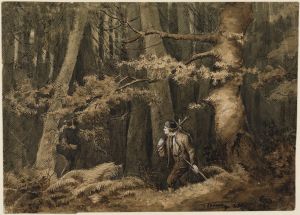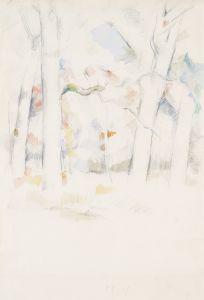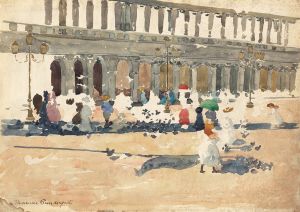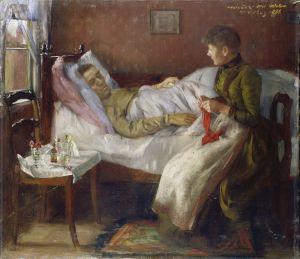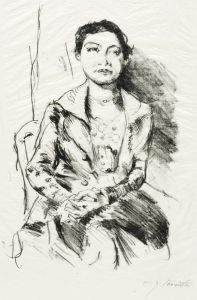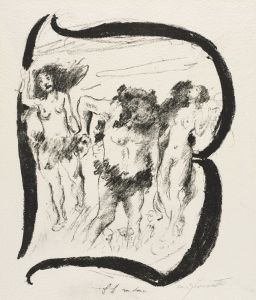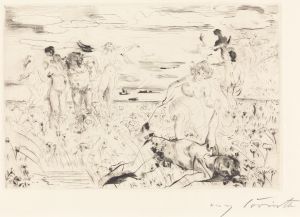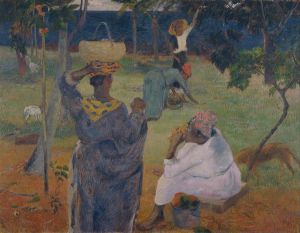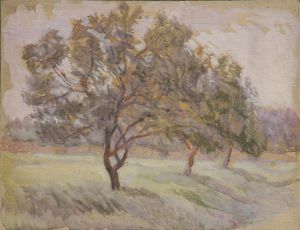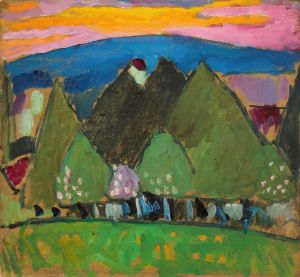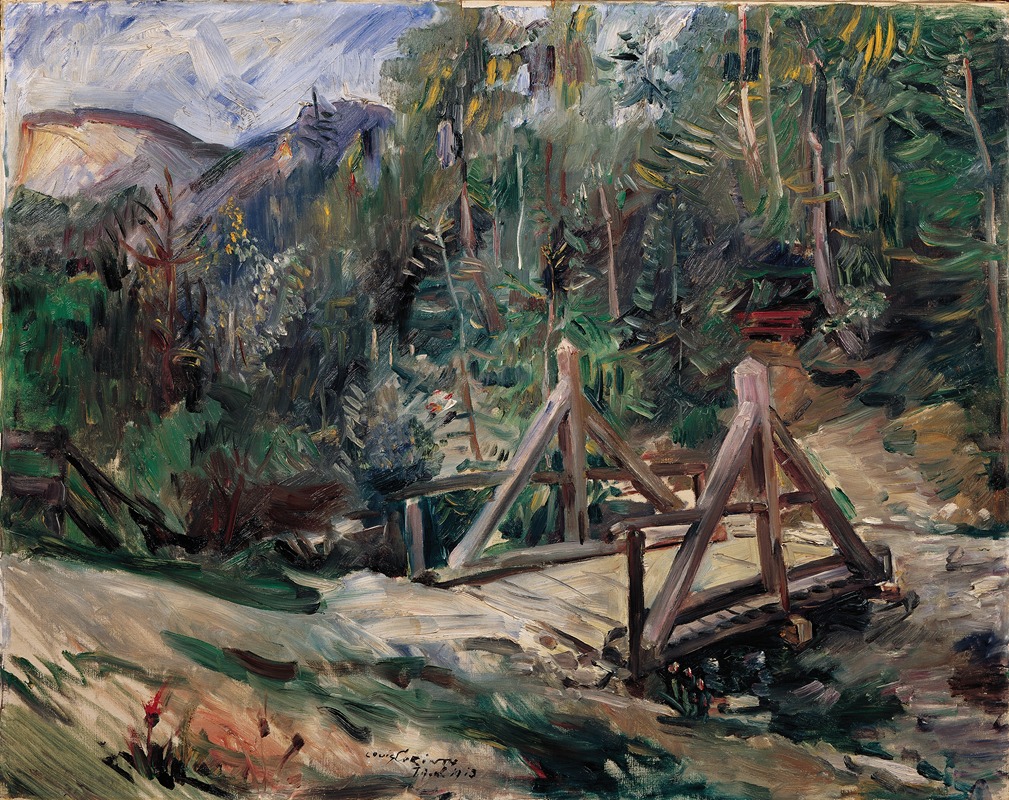
Tiroler Landschaft Mit Brücke
A hand-painted replica of Lovis Corinth’s masterpiece Tiroler Landschaft Mit Brücke, meticulously crafted by professional artists to capture the true essence of the original. Each piece is created with museum-quality canvas and rare mineral pigments, carefully painted by experienced artists with delicate brushstrokes and rich, layered colors to perfectly recreate the texture of the original artwork. Unlike machine-printed reproductions, this hand-painted version brings the painting to life, infused with the artist’s emotions and skill in every stroke. Whether for personal collection or home decoration, it instantly elevates the artistic atmosphere of any space.
Lovis Corinth, a prominent German painter and printmaker, created the artwork "Tiroler Landschaft Mit Brücke" (Tyrolean Landscape with Bridge). Corinth was a leading figure in the transition from Impressionism to Expressionism in German art. Born on July 21, 1858, in Tapiau, East Prussia (now Gvardeysk, Russia), he studied at the Academy of Fine Arts in Munich and later in Paris at the Académie Julian. His work is characterized by vigorous brushwork and a vibrant use of color, often exploring themes of nature, mythology, and the human condition.
"Tiroler Landschaft Mit Brücke" is one of Corinth's landscape paintings, a genre he frequently explored throughout his career. The painting depicts a scenic view from the Tyrol region, known for its picturesque landscapes that include mountains, valleys, and rivers. The inclusion of a bridge in the composition suggests a connection between different parts of the landscape, both physically and metaphorically. Bridges in art often symbolize transition and connection, themes that Corinth might have been interested in exploring.
Corinth's landscapes are noted for their dynamic compositions and expressive use of color, which can be seen in "Tiroler Landschaft Mit Brücke." His technique often involved loose, expressive brushstrokes that conveyed a sense of movement and emotion. This approach was part of his broader artistic philosophy, which sought to capture the essence and vitality of the subject rather than a detailed, realistic representation.
During his career, Corinth's style evolved significantly. His early works were more aligned with the Impressionist movement, focusing on light and atmosphere. However, after suffering a stroke in 1911, his style became more expressive and emotional, reflecting a deeper engagement with the themes of mortality and the human experience. "Tiroler Landschaft Mit Brücke" likely falls into this later period, where his work was marked by a more intense and personal expression.
Corinth was a prolific artist, producing a vast body of work that included portraits, landscapes, still lifes, and historical scenes. He was also an influential teacher and writer, contributing to the art community through his involvement with the Berlin Secession, an art movement that sought to challenge the conservative art establishment in Germany.
"Tiroler Landschaft Mit Brücke" exemplifies Corinth's ability to blend natural beauty with emotional depth, capturing the essence of the Tyrolean landscape while also imbuing it with his unique artistic vision. The painting reflects his mastery of color and form, as well as his ability to convey a sense of place and mood.
Lovis Corinth passed away on July 17, 1925, in Zandvoort, Netherlands, leaving behind a legacy that continues to influence artists and art enthusiasts. His work remains celebrated for its contribution to modern art, bridging the gap between Impressionism and Expressionism and offering a unique perspective on the world around him.





